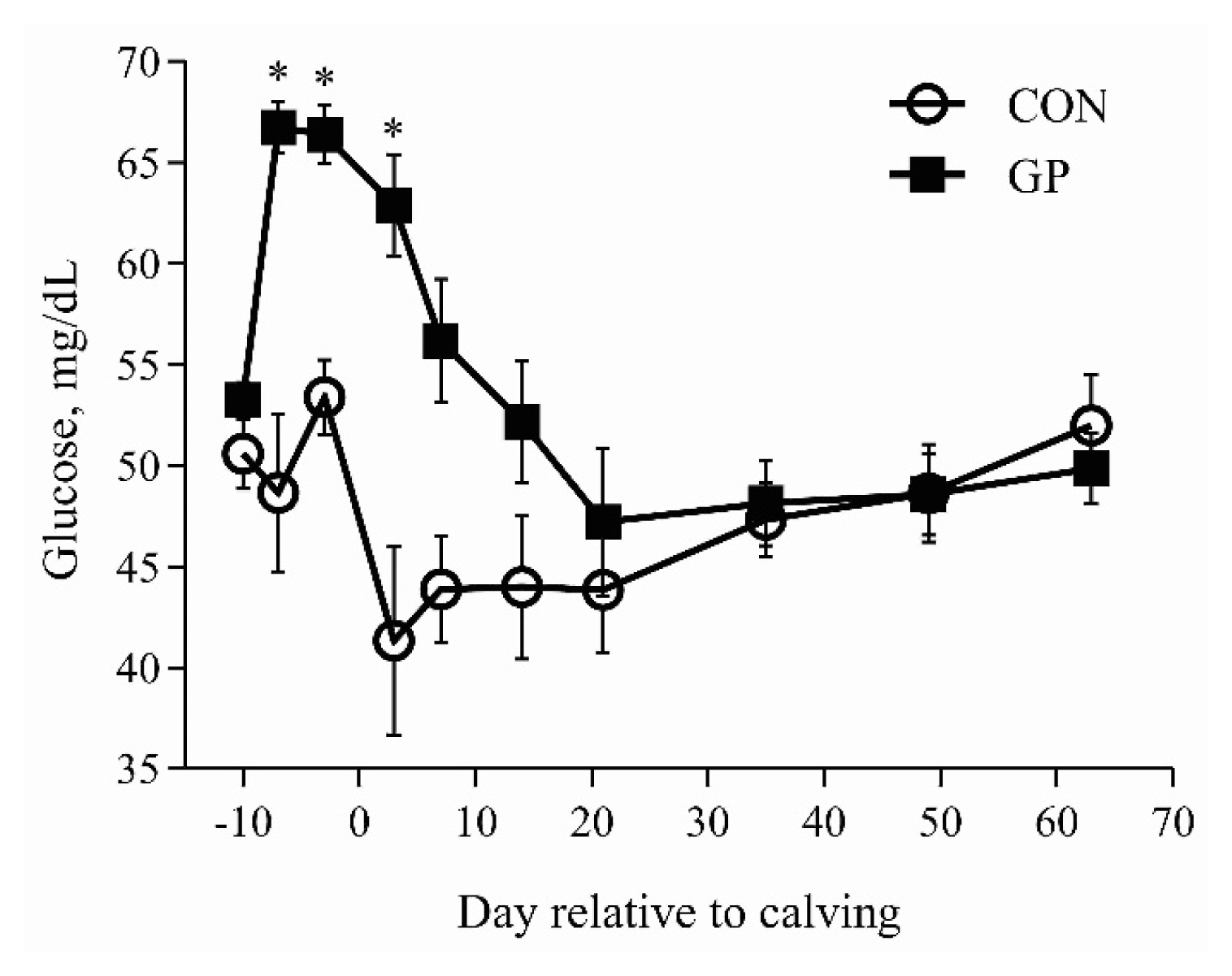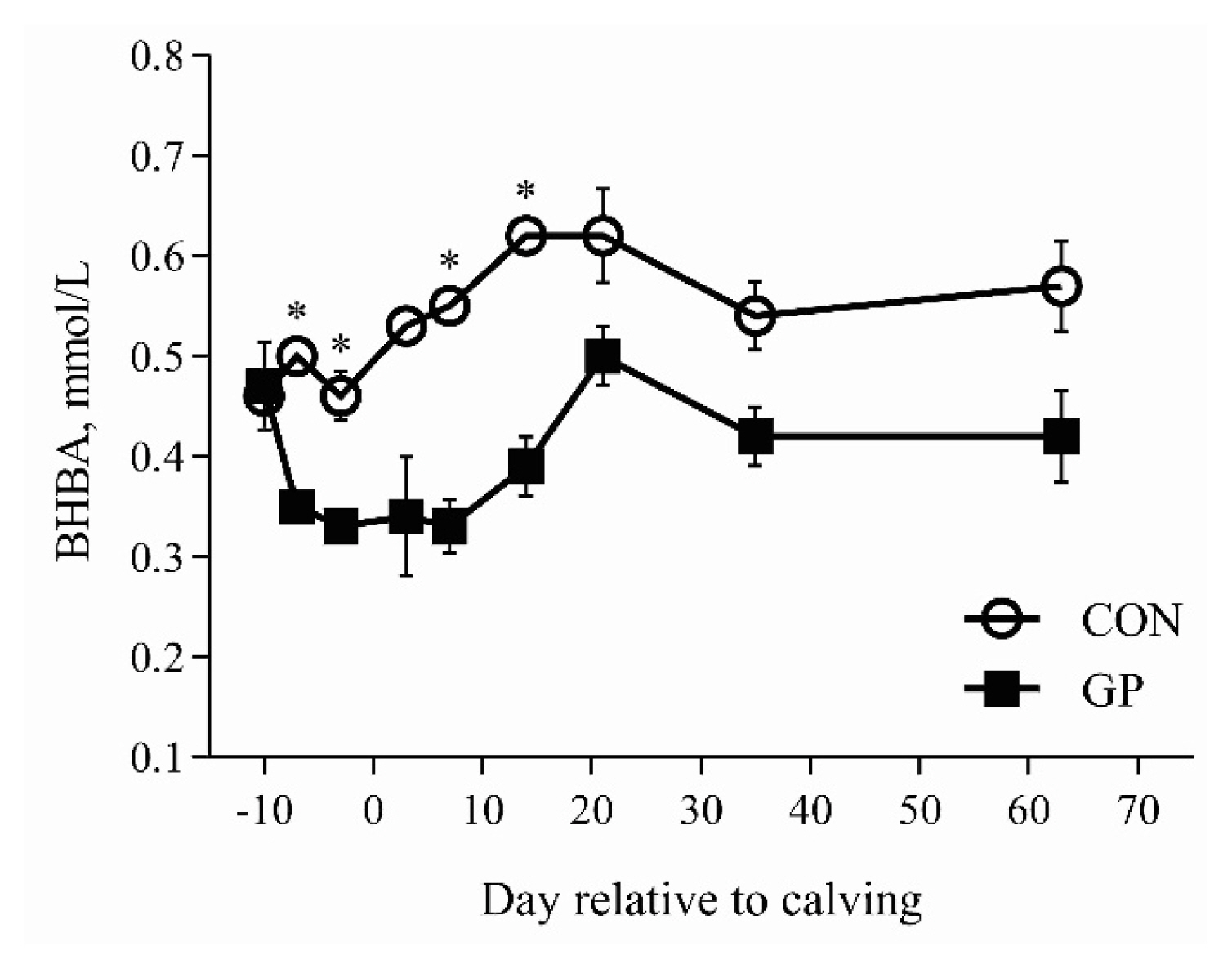3. Stevenson JS, Banuelos S, Mendonça LGD. Transition dairy cow health is associated with first postpartum ovulation risk, metabolic status, milk production, rumination, and physical activity. J Dairy Sci 2020; 103:9573–86.
https://doi.org/10.3168/jds.2020-18636


4. McArt JAA, Nydam DV, Oetzel GR. Dry period and parturient predictors of early lactation hyperketonemia in dairy cattle. J Dairy Sci 2013; 96:198–209.
https://doi.org/10.3168/jds.2012-5681


5. Berge AC, Vertenten G. A field study to determine the prevalence, dairy herd management systems, and fresh cow clinical conditions associated with ketosis in western European dairy herds. J Dairy Sci 2014; 97:2145–54.
https://doi.org/10.3168/jds.2013-7163


6. Cardoso FC, Kalscheur KF, Drackley JK. Symposium review: Nutrition strategies for improved health, production, and fertility during the transition period. J Dairy Sci 2020; 103:5684–93.
https://doi.org/10.3168/jds.2019-17271


7. McArt JAA, Nydam DV, Overton MW. Hyperketonemia in early lactation dairy cattle: A deterministic estimate of component and total cost per case. J Dairy Sci 2015; 98:2043–54.
https://doi.org/10.3168/jds.2014-8740


8. Lomander H, Frössling J, Ingvartsen KL, Gustafsson H, Svensson C. Supplemental feeding with glycerol or propylene glycol of dairy cows in early lactation—Effects on metabolic status, body condition, and milk yield. J Dairy Sci 2012; 95:2397–408.
https://doi.org/10.3168/jds.2011-4535


9. Rivas RMO, Gutierrez-Oviedo FA, Komori GH, et al. Effect of supplementation of a mixture of gluconeogenic precursors during the transition period on performance, blood metabolites and insulin concentrations and hepatic gene expression of dairy cows. Anim Feed Sci Technol 2021; 272:114791
https://doi.org/10.1016/j.anifeedsci.2020.114791

10. Lien T, Chang L, Horng Y, Wu CP. Effects of propylene glycol on milk production, serum metabolites and reproductive performance during the transition period of dairy cows. Asian-Australas J Anim Sci 2010; 23:372–8.
https://doi.org/10.5713/ajas.2010.60620

11. Bjerre-Harpøth V, Storm AC, Eslamizad M, Kuhla B, Larsen M. Effect of propylene glycol on adipose tissue mobilization in postpartum over-conditioned Holstein cows. J Dairy Sci 2015; 98:8581–96.
https://doi.org/10.3168/jds.2014-8606


12. McArt JAA, Nydam DV, Ospina PA, Oetzel GR. A field trial on the effect of propylene glycol on milk yield and resolution of ketosis in fresh cows diagnosed with subclinical ketosis. J Dairy Sci 2011; 94:6011–20.
https://doi.org/10.3168/jds.2011-4463


15. Janovick NA, Drackley JK. Prepartum dietary management of energy intake affects postpartum intake and lactation performance by primiparous and multiparous Holstein cows. J Dairy Sci 2010; 93:3086–102.
https://doi.org/10.3168/jds.2009-2656


16. Gärtner T, Gernand E, Gottschalk J, Donat K. Relationships between body condition, body condition loss, and serum metabolites during the transition period in primiparous and multiparous cows. J Dairy Sci 2019; 102:9187–99.
https://doi.org/10.3168/jds.2018-15762


17. Official Methods of Analysis. 18th edGaithersburg, MD, USA: Association of Official Analytical Chemists (AOAC International); 2005.
18. Akhtar MU, Hifzulrahman , Saadullah M, et al. Effects of prepartum dietary protein level and feed intake on postpartum lactation performance and feeding behavior of multiparous Holstein dairy cows. J Dairy Sci 2021; 104:9886–901.
https://doi.org/10.3168/jds.2021-20218


19. Dolecheck KA, Silvia WJ, Heersche G, et al. Behavioral and physiological changes around estrus events identified using multiple automated monitoring technologies. J Dairy Sci 2015; 98:8723–31.
https://doi.org/10.3168/jds.2015-9645


20. Schirmann K, von Keyserlingk MAG, Weary DM, Veira DM, Heuwieser W. Validation of a system for monitoring rumination in dairy cows. J Dairy Sci 2009; 92:6052–5.
https://doi.org/10.3168/jds.2009-2361


21. Hoedemaker M, Prange D, Zerbe H, Frank J, Daxenberger A, Meyer HHD. Peripartal propylene glycol supplementation and metabolism, animal health, fertility, and production in dairy cows. J Dairy Sci 2004; 87:2136–45.
https://doi.org/10.3168/jds.S0022-0302(04)70033-8


22. Liu Q, Wang C, Yang W, et al. Effects of feeding propylene glycol on dry matter intake, lactation performance, energy balance and blood metabolites in early lactation dairy cows. Animal 2009; 3:1420–7.
https://doi.org/10.1017/S175173110999036X


23. Østergaard S, Krogh MA, Oliveira VHS, et al. Only few benefits from propylene glycol drench in early lactation for cows identified as physiologically imbalanced based on milk spectra analyses. J Dairy Sci 2020; 103:1831–42.
https://doi.org/10.3168/jds.2019-17205


26. Meikle A, Kulcsar M, Chilliard Y, et al. Effects of parity and body condition at parturition on endocrine and reproductive parameters of the cow. Reproduction 2004; 127:727–37.
https://doi.org/10.1530/rep.1.00080


27. Nasrollahi SM, Ghorbani GR, Zali A, Kahyani A. Feeding behaviors, metabolism, and performance of primiparous and multiparous dairy cows fed high-concentrate diets. Livest Sci 2017; 198:115–9.
https://doi.org/10.1016/j.livsci.2017.02.017

29. Olson KM, Cassell BG, McAllister AJ, Washburn SP. Dystocia, stillbirth, gestation length, and birth weight in Holstein, Jersey, and reciprocal crosses from a planned experiment. J Dairy Sci 2009; 92:6167–75.
https://doi.org/10.3168/jds.2009-2260


30. Kaufman EI, LeBlanc SJ, McBride BW, Duffield TF, DeVries TJ. Association of rumination time with subclinical ketosis in transition dairy cows. J Dairy Sci 2016; 99:5604–18.
https://doi.org/10.3168/jds.2015-10509












 PDF Links
PDF Links PubReader
PubReader ePub Link
ePub Link Full text via DOI
Full text via DOI Download Citation
Download Citation Print
Print





